1,570 days, 2,407 entries ...
Newsticker, link list, time machine: HOLO.mg/stream logs emerging trajectories in art, science, technology, and culture––every day
“If your full-time, eight-hours-a-day, five-days-a-week job were to look at each image in the dataset for just one second, it would take you 781 years.”
“Universal / Remote,” a show chronicling how “capital and data flow freely on a global scale,” opens at the National Art Center Tokyo (NACT). Artists including Xu Bing, Maiko Jinushi, Trevor Paglen, and Evan Roth contribute works addressing globalization and social atomization. Hito Steyerl, Giorgi Gago Gagoshidze, and Miloš Trakilović stage their video installation Mission Accomplished: Belanciege (2019, image), a sardonic reflection on post-Berlin Wall European culture—and the luxury brand Balenciaga.
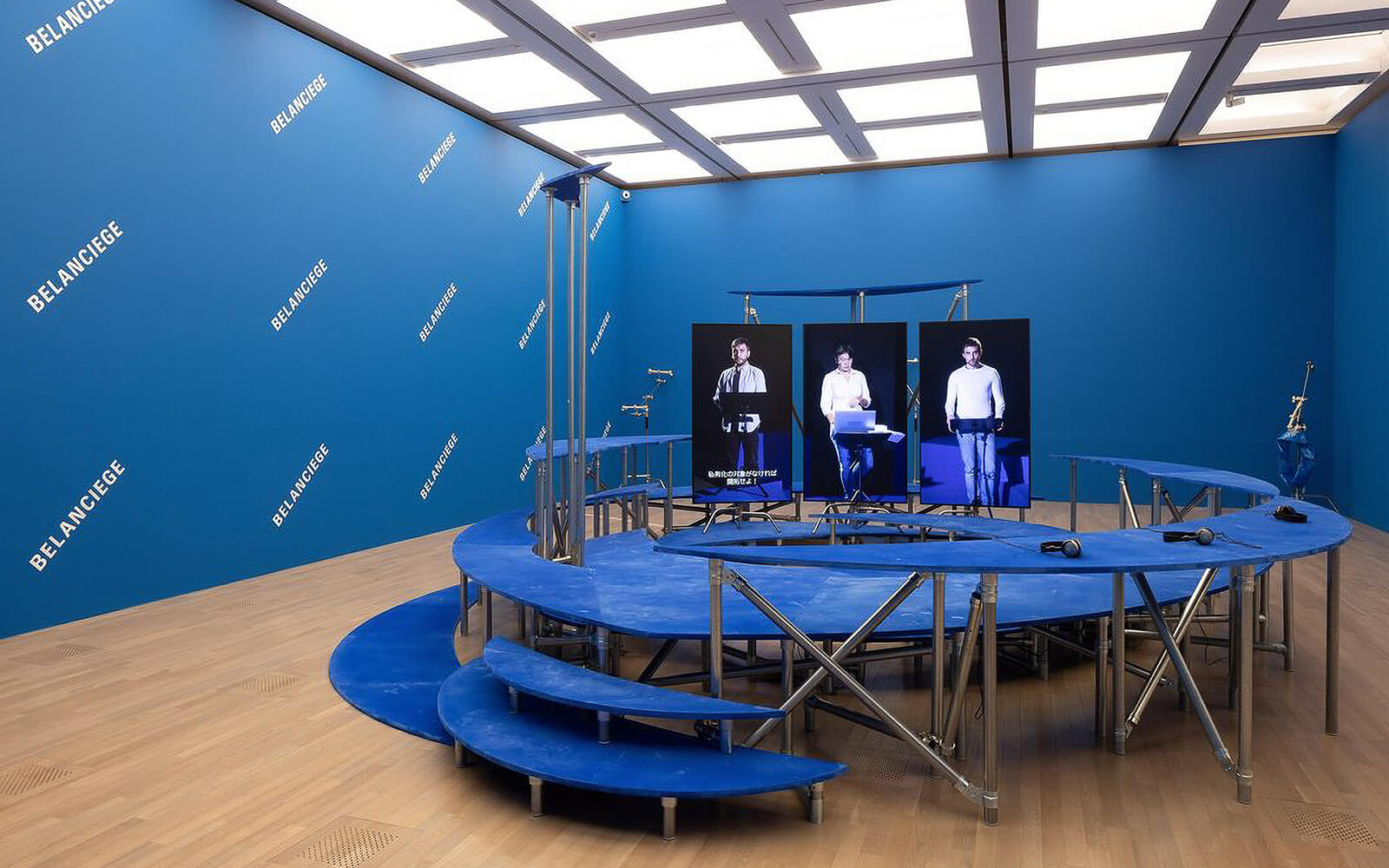
“I’m looking not only at what is unquantifiable or missing, but at what is unknowable. Knowledge doesn’t simply come to you; it also involves what you yourself and the space you’re in will allow you to know.”
“Decoding the Black Box” opens at Galerie Stadt Sindelfingen, Germany, exposing the corporate surveillance systems that invade the private sphere. 14 artists and collectives including Aram Bartholl (image: Are you human?, 2017), James Bridle, Adam Harvey, Femke Herregraven, Jonas Lund, !Mediengruppe Bitnik, Metahaven, and Mimi Ọnụọha make transparent the capitalist power structures of the internet and virtual image economy with evocative counter-narratives and provocations.

“I like to think of the creators of the barcode as the Oppenheimers of capitalism.”
“For me, drawing is a way of being in the world. When I draw and create with my machines, this creative process allows me to engage with the technology alongside my physical instincts to form a kind of gestural relation.”
Marshmallow Laser Feast premieres a new 3-channel video installation, Breathing with the Forest (2023, image), within Emergence Magazine’s “Shifting Landscapes” exhibition at Bargehouse, London. The show presents works by nine artists and filmmakers including Adam Loften, Kalyanee Mam, and Katie Holten, that “open our imaginations to our entanglement with the biosphere.” Laser Feast’s contribution, for example, invites visitors to ‘take in’ volumetric and ambisonic field recordings of the Colombian Amazon.
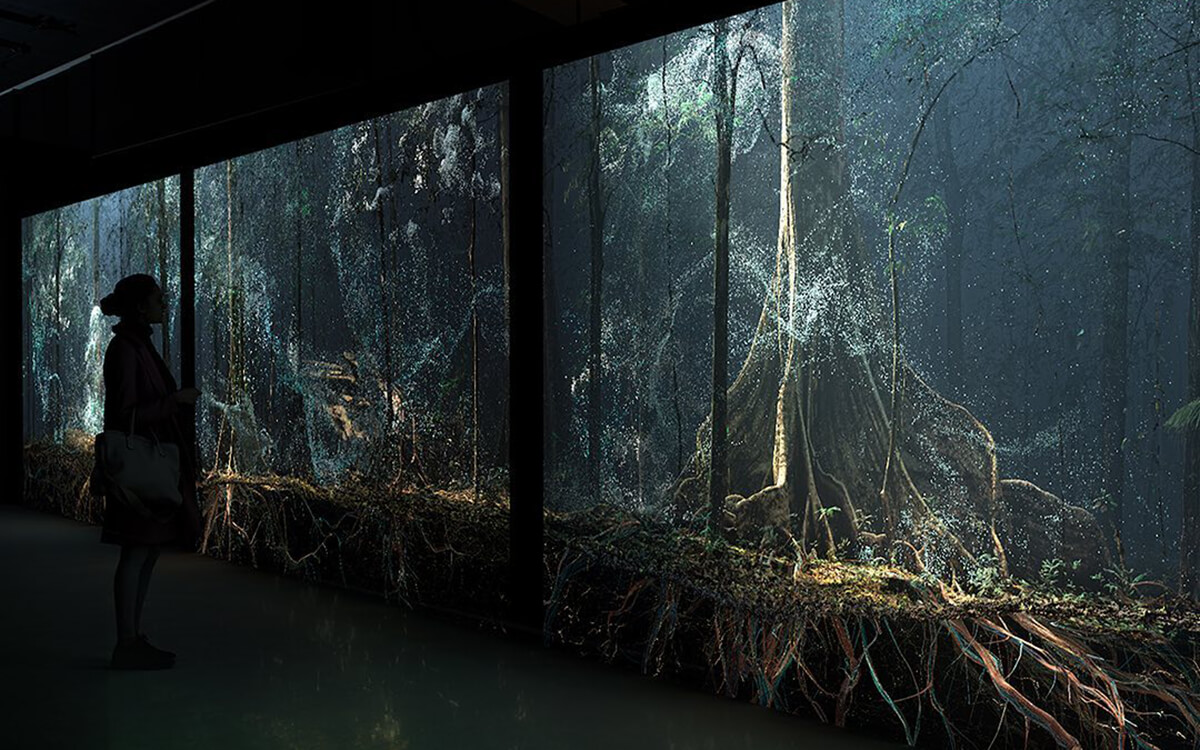
Ottawa’s Artengine launches the CanCon AV Index (CAVI), a search engine that “fences off sections of YouTube,” isolating videos by 500 Canadian arts organizations. Ambitiously, the project team of Ryan Stec, Najeeba Ahmed, Julie Gendron, and Ashlee Conery scraped 33,000 videos (and metadata)—yielding a treasure trove of lectures, artist talks, and panels. Part alt-interface and part data liberation, CAVI rebuts against “optimizing to be machine-readable and playing the algorithm” (i.e. gambling for attention).
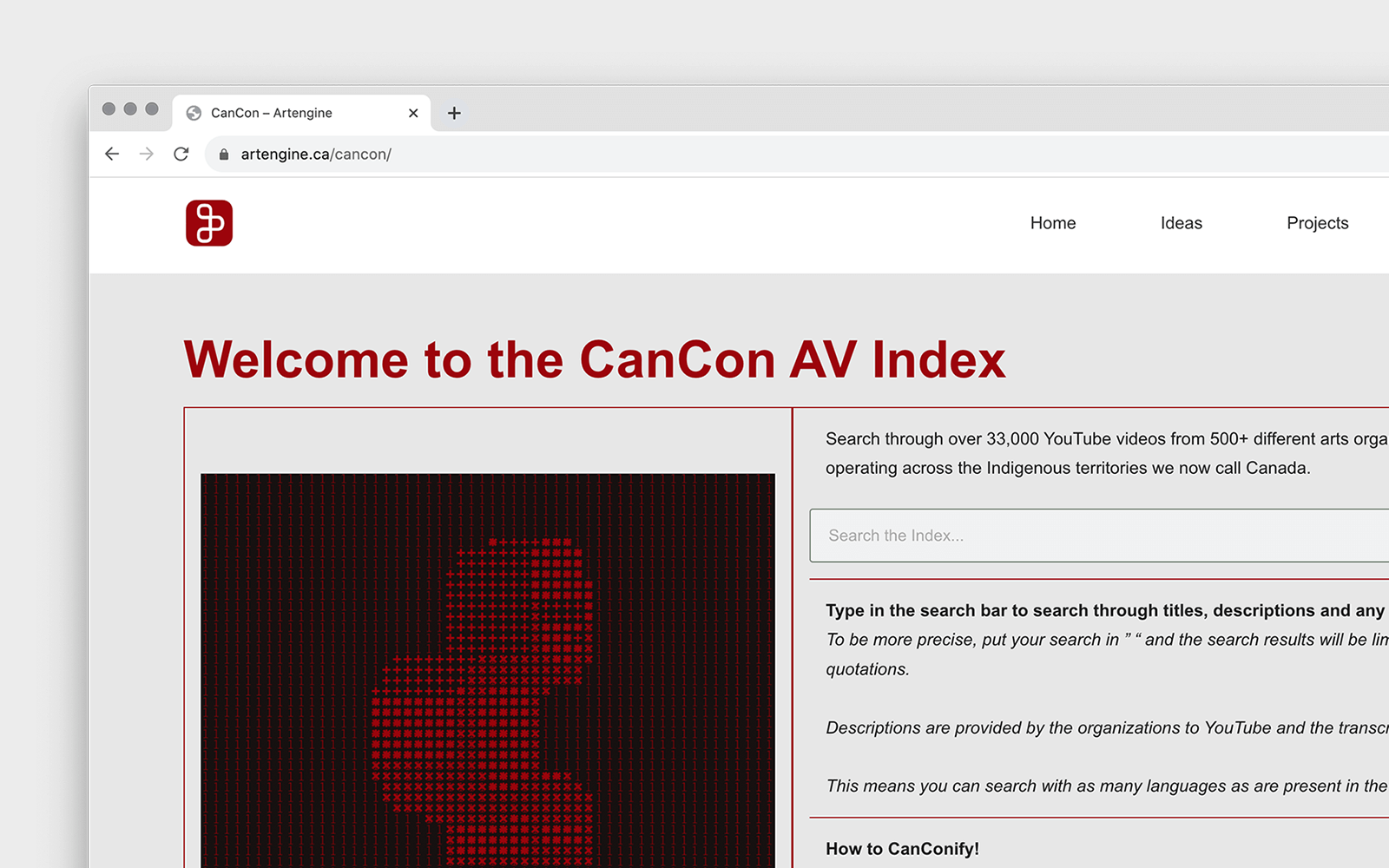
Billed as their largest solo show to date, Eva & Franco Mattes’ “Fake Views” opens at Frankfurter Kunstverein (DE), illuminating platform culture, internet infrastructures, and online communities. For their new installation P2P (2022-23, image), for example, the Italian net art duo invited peers Nora Al-Badri, Simon Denny, Do Not Research, Olia Lialina, Jill Magid, and Jon Rafman to create new works to be hosted on a peer-to-peer server enclosed in a wire cage—an ‘exhibition within the exhibition.’
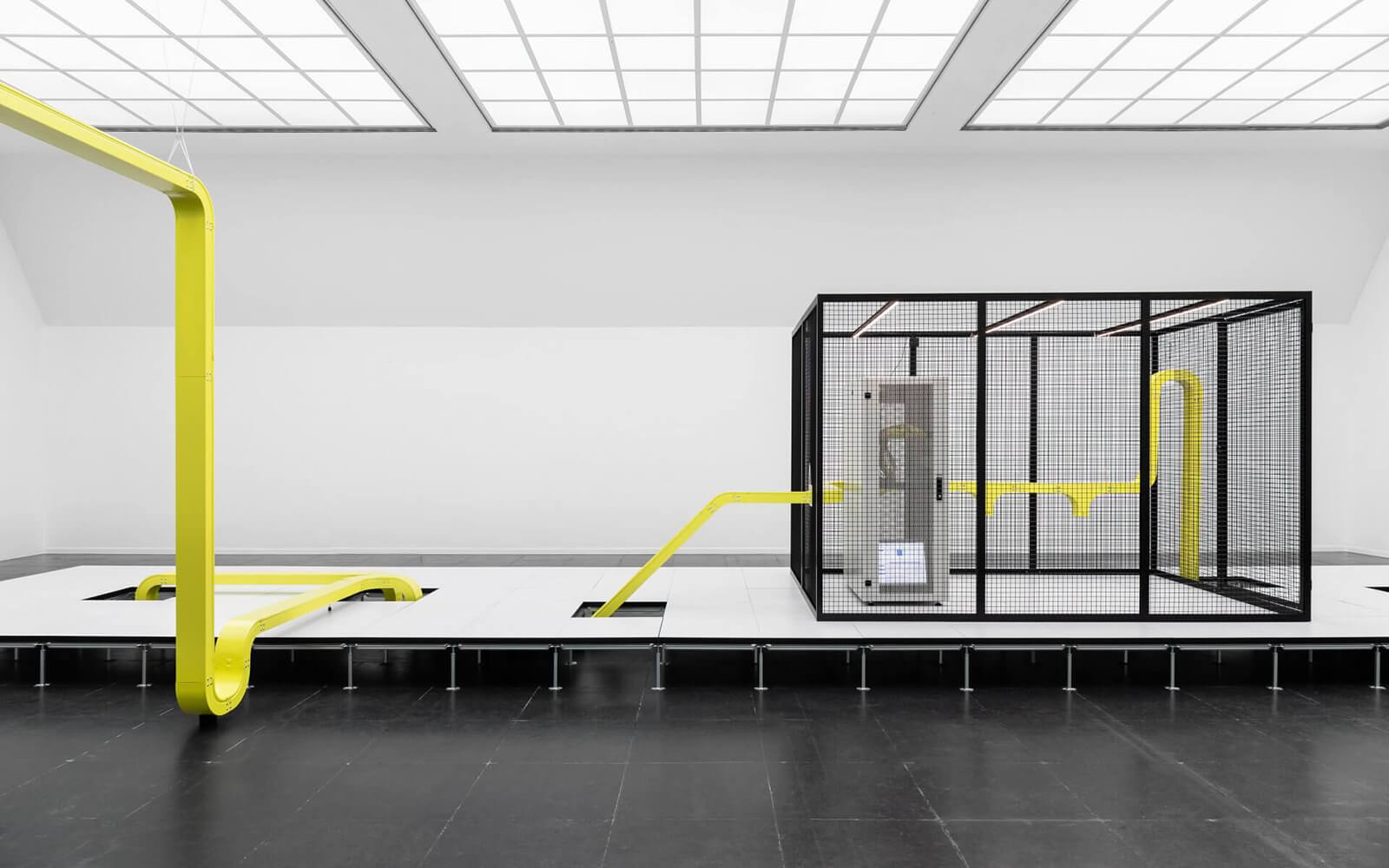
Danish interaction designer Bjørn Karmann premieres Paragraphica (2023), a camera that ‘captures’ images with location data (address, weather, time of day, etc.) and AI. Three dials control the data and Stable Diffusion parameters while the viewfinder displays a real-time text description of the place you’re at. Upon pressing the trigger, the AI will generate a ‘photo’ from that prompt. The project exists both as a physical, star-nosed mole-inspired prototype and a virtual camera for you to try.
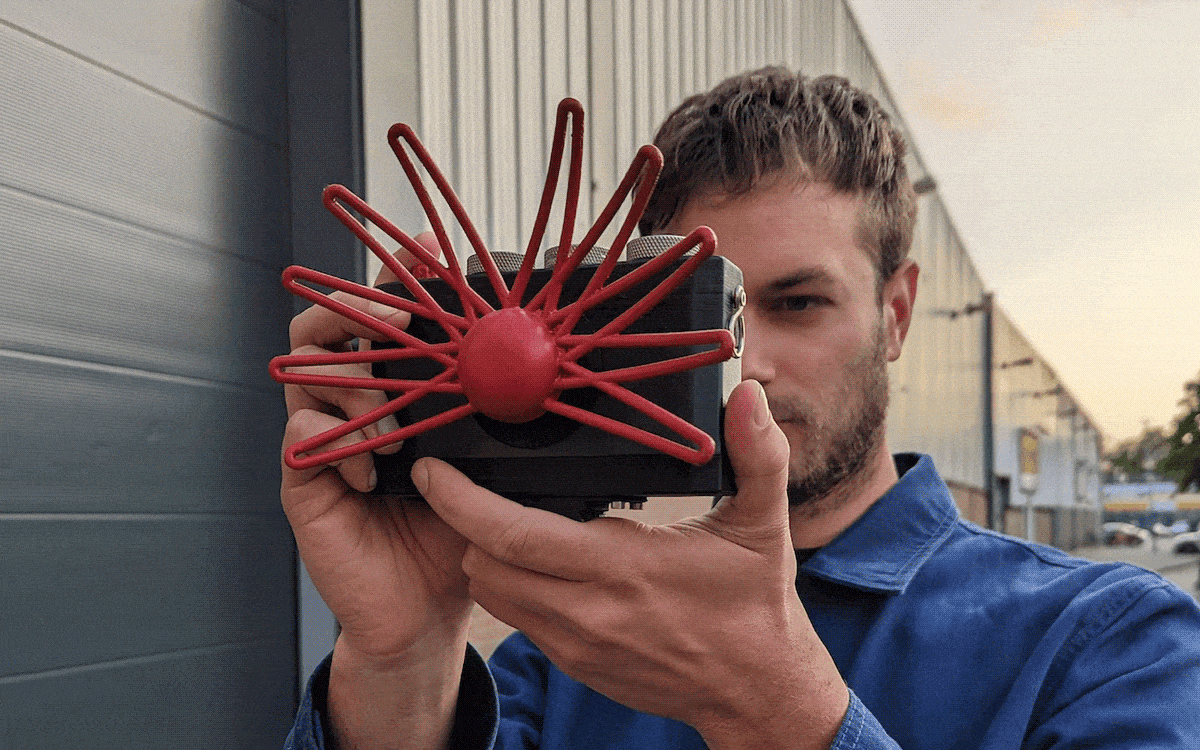
“Where Big Data is merely aestheticized, a new court art is created, in whose flickering lights you can ‘talk about e-cars’ with politicians and lobbyists undisturbed, as entrepreneur Frank Thelen enthusiastically posted.”
Manifesting how data centres “buzz, hum, and groan around the clock,” 24/7 (2023, image), a new audiovisual installation by composer and visual artist Esmeralda Conde Ruiz opens at HELLERAU in Dresden (DE). Produced during her residency at TU Dresden’s multidisciplinary Schaufler Lab, the installation transforms the HELLERAU orchestra pit into a pseudo-server farm, inviting visitors to explore a noisy labyrinth that foregrounds the sound of ubiquitous data flows.
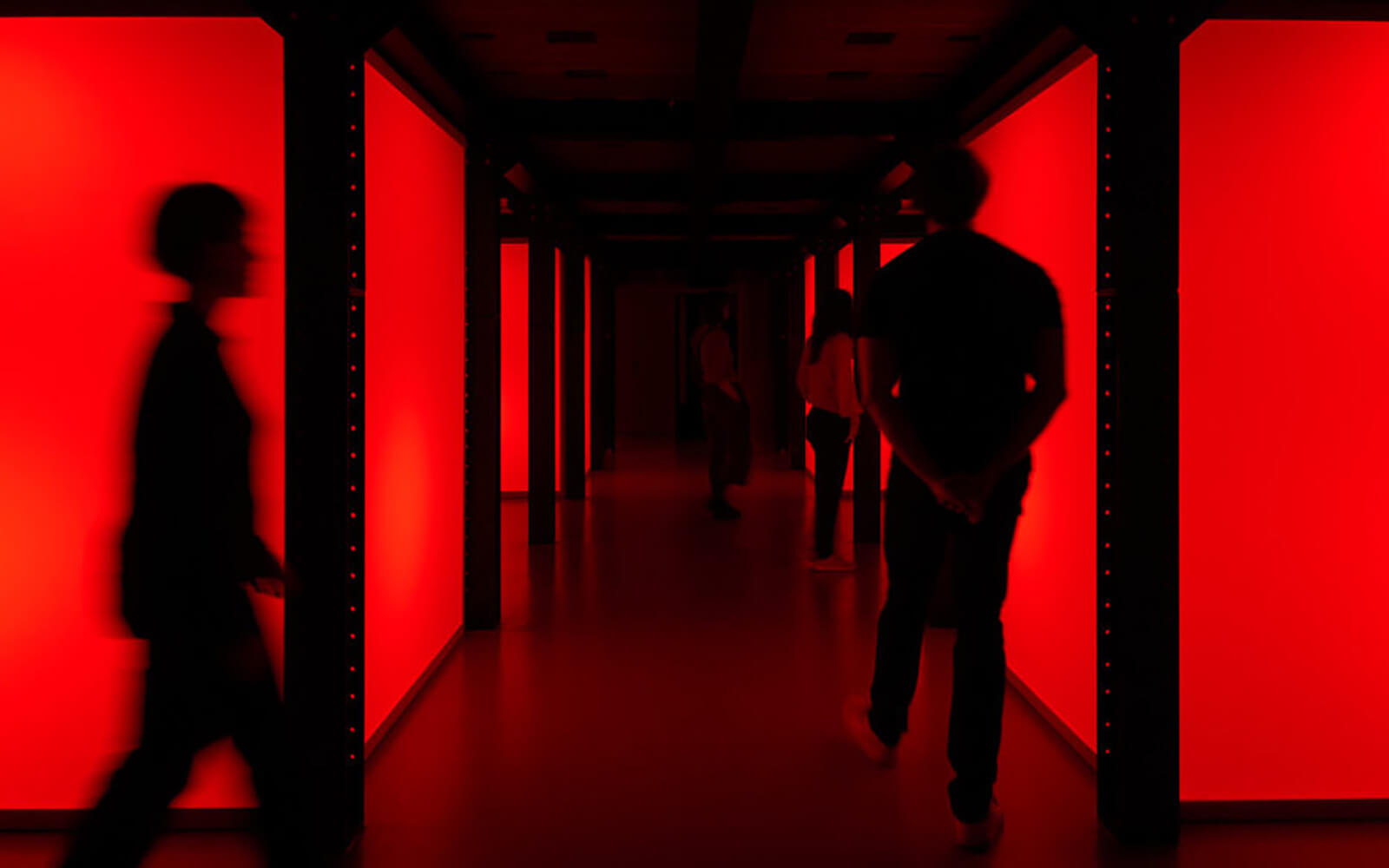
“New Visions,” the 2nd Edition of the Henie Onstad Triennial for Photography and New Media opens in Oslo (NO). A total of 22 artists including Anna Ehrenstein, Anna Engelhardt, Kristina Õllek, Monira Al Qadiri, Emilija Škarnulytė (image: RAKHNE, 2023), and Istvan Virag contribute media and installations, drawing on traditional mediums and new modes of automated image-making to underscore the ubiquity of “resource extraction, energy distribution, and data harvesting.”
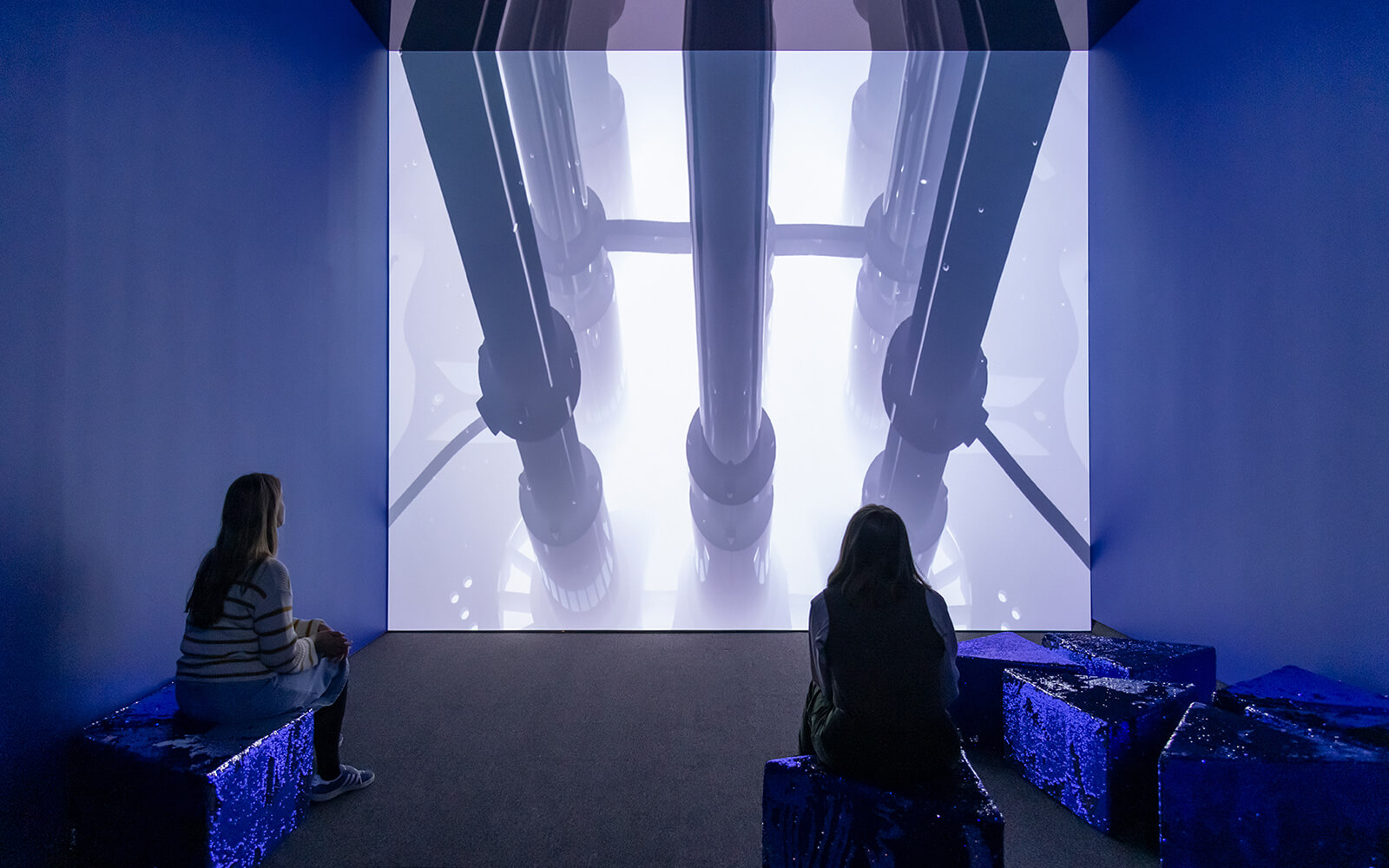
“We could almost touch the data but we cannot see it. Like the billions of images made each day that no one will ever look at. Some of these unseen photographs are made by people, others by and for machines.”
“Even though © doesn’t provide for any protection against biometric use, it does prohibit the redistribution of the image file. CC allows it. Ideal for packaging files into datasets.”
“Rap Research Lab,” an exhibition showcasing Tahir Hemphill’s eponymous studio and education initiative, opens at the Center for Art, Design & Visual Culture (CADVC) at the University of Maryland, Baltimore County (US). Presented works interpreting hip hop lyrics as datasets include Picasso, Baby! (2014), which visualizes cross-connections between rappers and modern artists, and Maximum Distance. Minimum Displacement. (2014, image), which maps geography in lyrics of MCs including Jay Z and Missy Elliot.
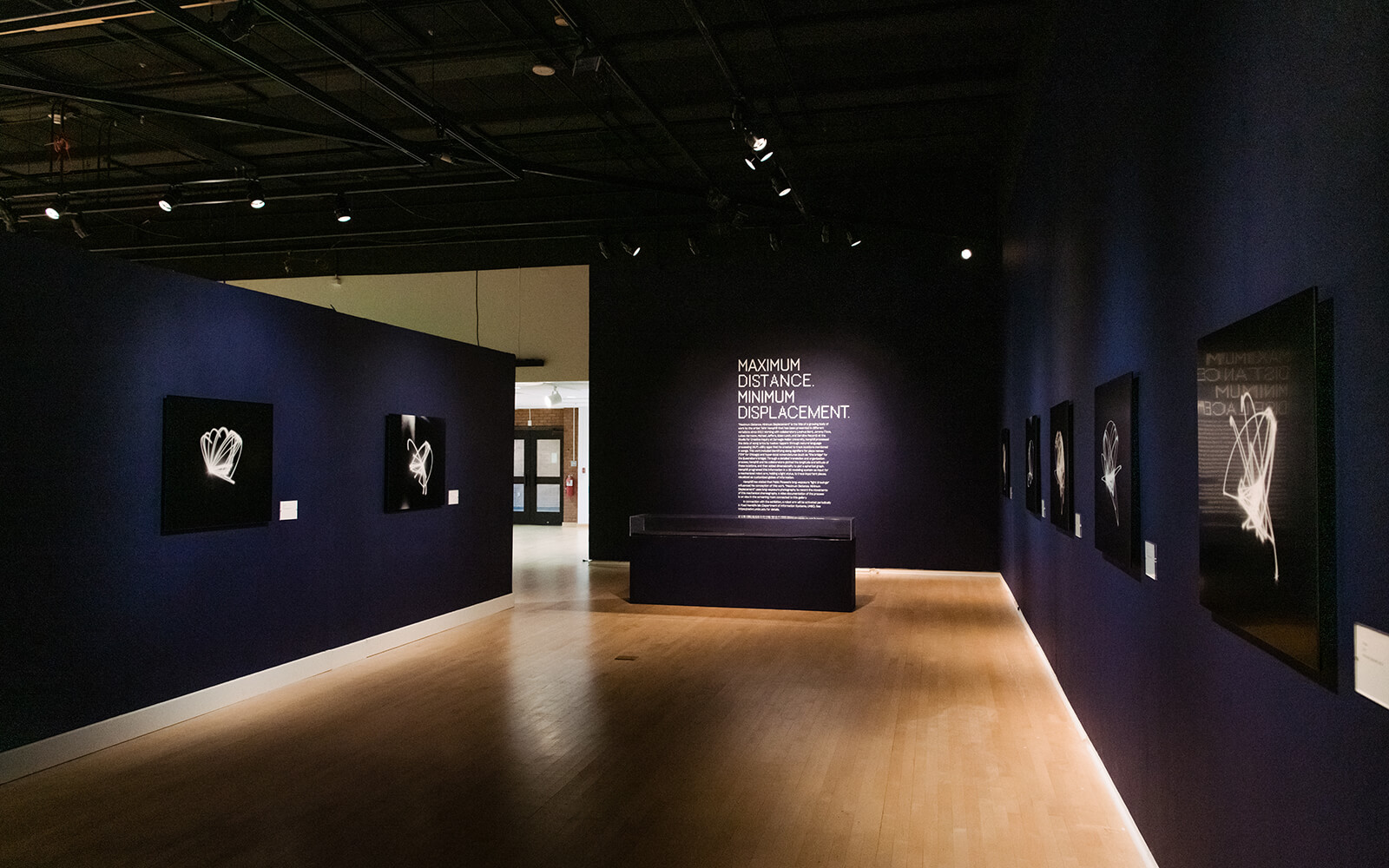
“Data Garden,” an exhibition by Kyriaki Goni, opens at Blenheim Walk Gallery in Leeds, UK. In it, the Greek artist presents her eponymous ongoing series (image), which uses CGI and sculpture to chronicle Saxifraga depressa and Micromeria acropolitana, plant species native to the Dolomites mountain range and the Acropolis. Presenting plant DNA as a communication protocol that links communities, Goni centres “deep time, geological transformations, and plant history.”
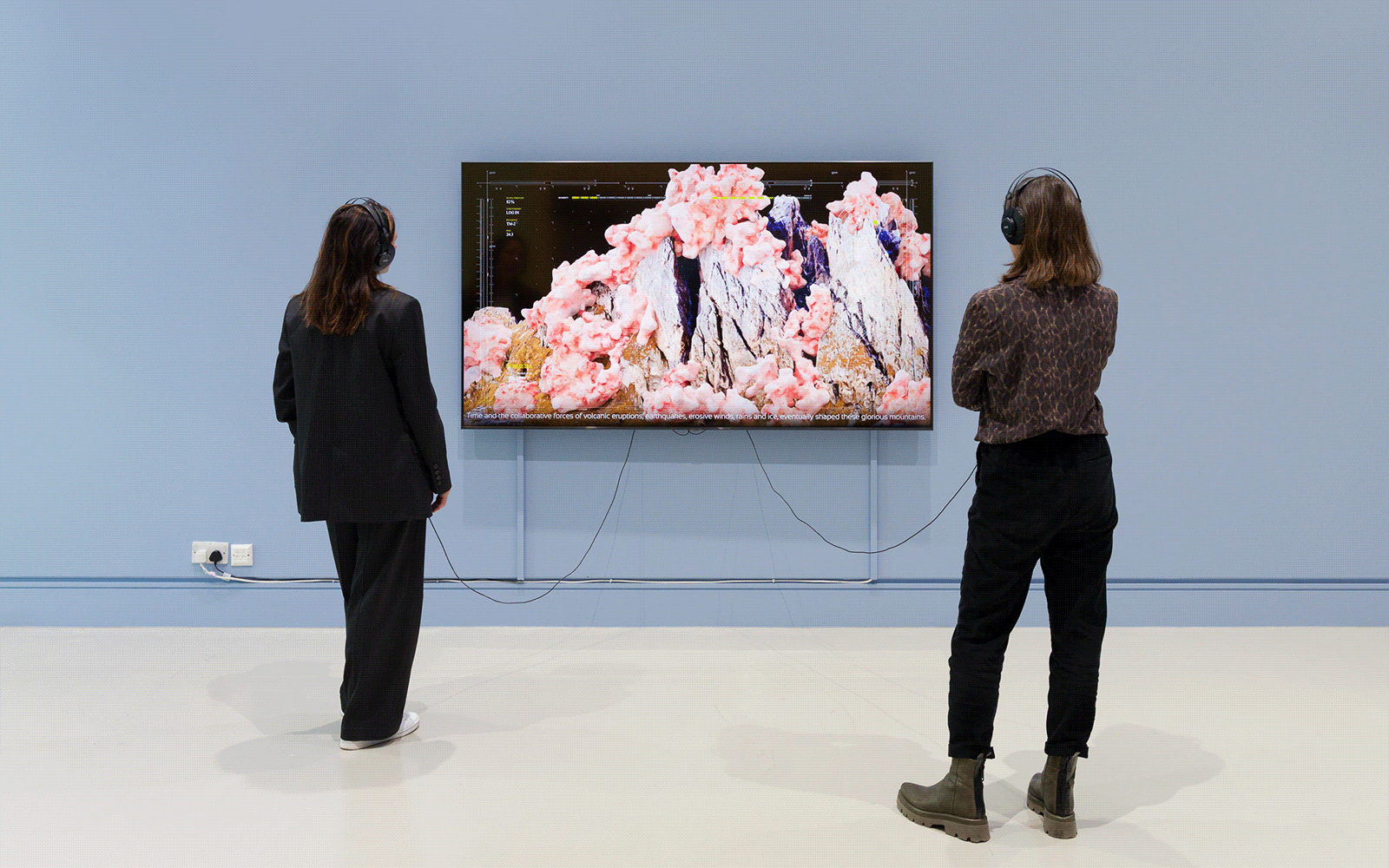
Marco Barotti‘s solo exhibition “Rituals of Wasted Technology” opens at silent green, Berlin, presenting two mythical techno-species in defiance of obsolescence: As tower-mounted APES (recycled Wi-Fi sector antennas) perform ”quasi-rituals” from data input—Facebook likes, Google searches, tinder swipes—SWANS (used satellite dishes) float about, propelled by sound. Barotti’s show is part of “Speaking to Ancestors,” a two-year series on ritual curated by Pauline Doutreluingne and Keumhwa Kim.
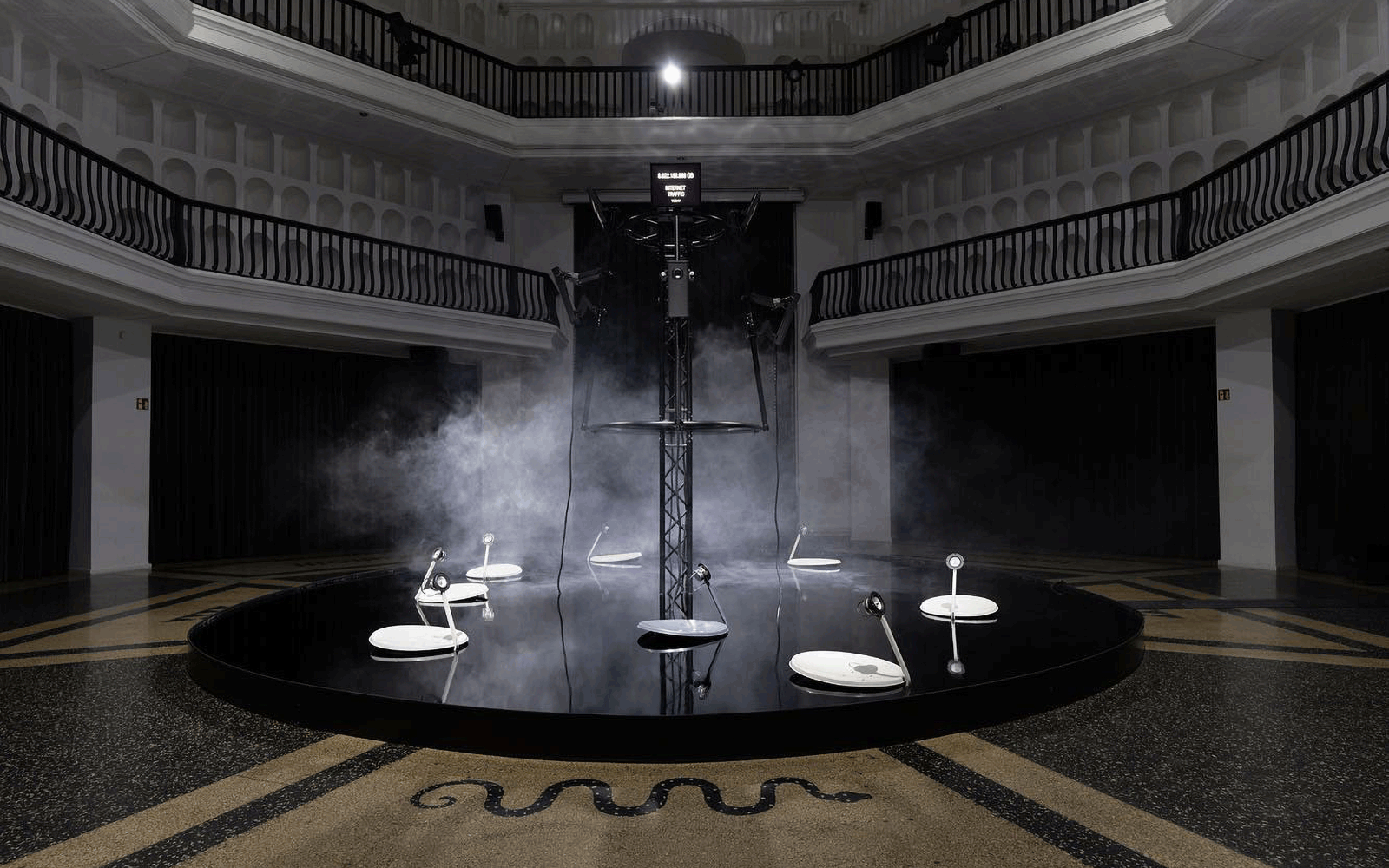
“When I say profit is the main driver behind this, it’s really important, because this is not necessarily how it needs to be, but it is how these systems are set up.”
Daily discoveries at the nexus of art, science, technology, and culture: Get full access by becoming a HOLO Reader!
- Perspective: research, long-form analysis, and critical commentary
- Encounters: in-depth artist profiles and studio visits of pioneers and key innovators
- Stream: a timeline and news archive with 1,200+ entries and counting
- Edition: HOLO’s annual collector’s edition that captures the calendar year in print
